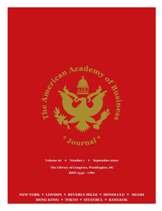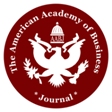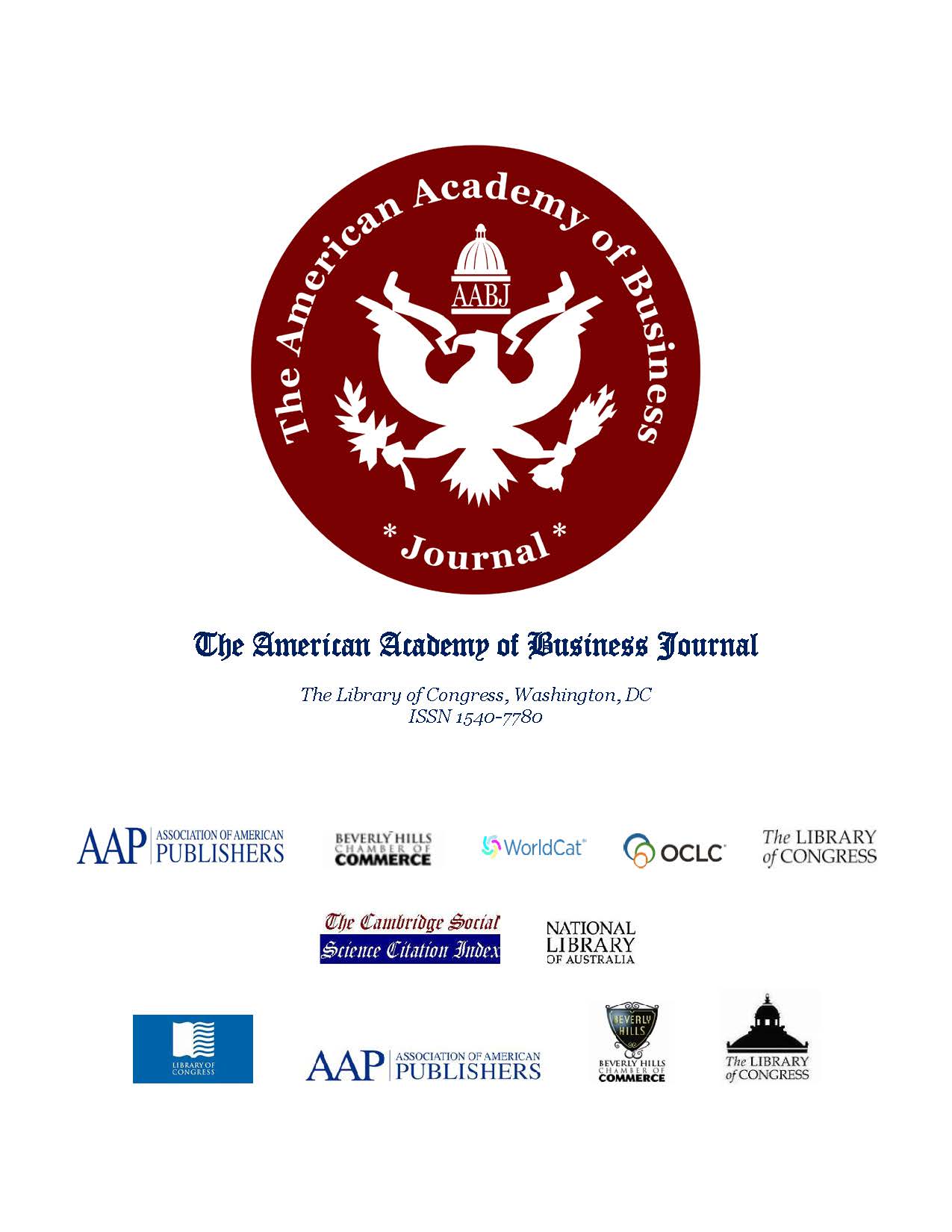|
Textual Analysis of Corporate MD&As to Determine Readability
Dr. Roberta Cable,
Pace University, NY
Dr. Chunyan Li, Pace
University, NY
Zhe Yu, Pace University, NY
ABSTRACT
The
Management Discussion and Analysis section (MD&A), a disclosure required
by the SEC, is found in a company’s Form 10-K or annual report. It
is written by management and provides investors and analysts with an
overview of the company’s prior-year operations, as well as insights
into the future. We believe it is important to consider that, although
guidelines for the MD&A are provided by the SEC, style and format are at
the discretion of management. The purpose of this paper is to determine
the readability of MD&As as it relates to the overall performance of a
company. We used textual analysis to test and compare the
readability of MD&As of stronger companies with those of weaker
companies. The companies were classified into three different
industries. We found that the MD&As of stronger companies were
more readable than those of weaker companies, particularly for those
classified by Bloomberg as Industrials. The Securities and
Exchange Commission (SEC) has long recognized the need for a narrative
explanation of the financial statements because a numerical presentation
and brief accompanying footnotes alone may be insufficient for an
investor to judge the quality of earnings and the likelihood that past
performance is indicative of future performance. The Management
Discussion and Analysis section (MD&A), a disclosure required by the SEC
is found in a corporation’s Form 10-K or annual report. Among
other items, this section provides a commentary on financial statements,
systems and controls, compliance, risks, changes in accounting
regulations and policies, and future goals and projects. This
section is not audited. It is written by management and provides
investors and analysts with an overview of the company’s prior-year
operations as well as insights into the future. The MD&A is
intended to give the investor an opportunity to look at the company
through the eyes of management by providing both a short and long-term
analysis of the company (SEC 1987). The MD&A section of the annual
report began in 1968 as part of the guide for Preparation and Filing of
Registration Statements (SEC 1968). Since then, there have been multiple
releases by the SEC to enhance disclosure requirements and promote
understandability of annual report information. For example, in the 1980
amendment, the SEC wanted to see more discussion about liquidity and
results of operations, adopting the present form of the disclosure
requirements for MD&A (SEC 1980). In 1987 and 1989, the SEC
provided more explicit guidance on prospective disclosures, with the
1989 release specifying that a disclosure duty exists when a trend,
demand, commitment, event or uncertainty is both known to management and
likely to have material effects on the financial condition or results of
operations (SEC 1987; 1989). The 1987 amendment explicitly states the
need for a narrative explanation of the financial statements, “because a
numerical presentation and brief accompanying footnotes alone may be
insufficient for an investor to judge the quality of the earnings and
the likelihood that past performance is indicative of future
performance.
Full Text
*
Google
Scholar Index1 *
Google
Scholar Index2
Russian
Agricultural Support Policies: The Case of Krasnodar Region
Dr. Olga Murova, Associate
Professor, Texas Tech University, TX
ABSTRACT
Russian agriculture has gained momentum in
recent years. Agricultural production has increased in the crops and
livestock industries. This study aims to investigate current Russian
agricultural policies on producers’ subsidies and to assess how these
policies, together with governing policies of local institutions, impact
the development of agriculture and agribusiness in Russia and in the
Krasnodar region. Krasnodar ranks first place in Russia in the terms of
the volume of gross agricultural production. It is also an important
player in the food industry of the Russian Federation. The Krasnodar’s
region produces 7% of the overall food production in the Federation.
Recent Krasnodar agricultural statistics show solid performance of
production in the region. As the leading region within Russian
Federation, Krasnodar receives federal support funds for agriculture and
agribusinesses. The total amount of support allotted for agribusinesses
of the Krasnodar region in 2021 is 5.48 billion rubles, comprised of 79%
federal funds and the remaining 21% of the funds coming from the
regional budget. Given continuation of current leadership policies and a
stable investment climate, the Krasnodar region will continue to grow
and expand its agricultural production, agribusiness and exports of
grain. Since
2005, Russia has released multiple agricultural policies aimed to
improve the poor state of agriculture especially in the livestock and
dairy industries. Ten years later, these policies have brought only very
modest improvements to the agricultural sector. In 2014, after the
events in Crimea and Donetsk, the U.S. and Europe banned the majority of
their exports to Russia. In return, Russia implemented aggressive
protectionist measures in its own agricultural sector to counteract the
U.S. and European sanctions. Russia’s “import substitution” strategy,
numerous Sanitary and Phytosanitary Standards, and countersanctions have
supported Russia’s food security initiatives.
In 2021, the Food
Security Doctrine was set in place, followed by the State Program on
Development of Agriculture and Regulation of Agricultural Commodity
Markets for 2013-2020. Initially these policies had a slow start, but by
2018, Russia had met six of the eight production target levels set by
the Doctrine of 2010, bringing Russian agriculture to more advanced
levels. In March 2017, State Program amendments increased the total cost
of the State Program to 1.55 trillion rubles, 2.6% higher than the
original plan adopted in 2012 (GAIN Report, 2018). The amendments also
changed the structure of the State Program. Sub-programs were merged to
give regions more flexibility in using federal funds and the new
structure of the State Program emphasized import substitution in the
food supply and enhancement of Russian agricultural exports. The last
amendments to the State Program were made in December 2017 and budget
funds were increased for 2018-2020. Main protective measures for
agricultural producers include various subsidies and partial
compensation of capital expenditures, costs, and interest rates. In
2017, the latest implementations of agricultural programs and reforms
produced positive results. The Russian agricultural sector increased its
GDP by 2.4% (GAIN Report, 2018). Figure 1 provides comparison of the
overall GDP growth and the production growth of Russian agriculture
since 1994. As seen from this figure, agricultural growth outperformed
the general economic growth since 2008. In 2017, the agriculture’s
share in GDP in real terms remained 4.1% (Diloette CIS Research Center,
2018). In 2017, the net profits of agrobusiness companies reached RUB
270 billion.
Full Text
*
Google
Scholar Index1 *
Google
Scholar Index2
E‑N‑K‑T‑G‑A‑M‑I‑R: Marketing Model 101 For Non-Business Executives
Nadeem M. Firoz, B.Com
(Hons); M.Com; MBA; Ph.D.; Fulbright Scholar / Fulbright Specialist
Retired Professor of
Int’l Mktg., Montclair State University, Upper Montclair, NJ
Adjunct Prof. of Mktg
currently at Baruch, CUNY. NY
ABSTRACT
This
paper describes how systems of classifying and defining the variables in
the marketing mix were developed and the status of these systems today.
In this paper the authors propose an expanded definition of marketing
and develop a new systematic expression for the mix of variables found
in marketing. The variables are expressed in a logical order using
the acronym E‑N‑K‑T‑G‑A‑M‑I‑R. One can rearrange these initials to
spell - M‑A‑R‑K‑E‑T‑I‑N‑G. and hence remember. In this acronym one can
find most important key ingredients without which it will be impossible
to do any kind of marketing activity. The life line of marketing
variable for example starts with E: Environment (SWOT), N:
Needs and wants include, Market information system or Market
research, basic marketing K: Knowhow, segmentation and T:
Targeting, marketing mix which include (product) G: Goods,
(price) A:
Amount, (place) M: Market, (promotion) I: Information
and at the end R: Reward or profit. This model makes it very easy
not to miss any important ingredient in the recipe of marketing. This
acronym will help a non-marketing or non-business executives like
engineers, doctors, lawyers, architect, historians, educators & many
more to have basic idea how to market any product or service. This
paper concludes with a diagram of the new system which can help
non-marketing practitioners, develop marketing plans. This author has
used very successfully this model in teaching marketing classes for
under graduate and graduate levels for last 20 years. All
businesses must perform two basic functions. They produce goods or
services, and then they market them. This is true for all firms
regardless of size from giant multinationals such as General Motors down
to small neighborhood stores. Unfortunately, most people consider
marketing to be selling or advertising, not realizing it is much, much,
more HubSpot Blog, Feb 25, 2021. Marketing is the study of
consumers: to find out what they will buy, and why, where, when, and
how, they will buy it. Marketing relates to all of us every day of
our lives. If we have a good understanding of marketing, we will
understand consumers better.
Heidi in “72
Marketing Definitions” states, “Marketing
comes in a wide
variety of flavors based on audience, media platform and business in
today’s evolving and dynamic marketplace. - Therefore, it’s no surprise
that marketers define what they do differently” (Heidi Cohen Mar 29,
2011, Investopedia, Aug 17, 2020) No single definition of
marketing has ever been universally accepted. Here are some marketing
definitions from experts and professionals along with old and new
definitions of American Marketing association’s The American Marketing
Association (AMA) in 1960 defined Marketing as: "Marketing is the
performance of business activities that direct the flow of goods and
services from producer to consumer or user." (AMA). Many marketing
authorities have considered their definition too narrow because it deals
only with the distribution process. It pertained more to economics
than to marketing possibly because the forefather of marketing was
economics.
Full Text
*
Google
Scholar Index1 *
Google
Scholar Index2
Authenticity: Exploring Potential Synergy between Existentialism and
Christian Leadership
Dr.
David Robinson, Professor, Holmes Institute, Australia
Dr.
Gordon Bauer, Academy of Business Acumen, South Africa
ABSTRACT
This article explores whether
existentialism and Christian leadership can potentially be synthesized
by the application of three stage theory, which has wide application in
both philosophical and theological discourse. In this paper, the authors
explicate and apply a model of bio-psycho-social behavior known as the
Values Journey (Robinson, 2020). Their nexus for existentialism and
Christian leadership is positioned at stage three of the Values Journey
model and is centered around the concept of authenticity. In
this article, the authors seek to reconcile thinking and believing by
employing a non-antagonistic approach. It is our contention that they
need not be, and are naturally not inclined to be, in opposition to each
other, and that they are certainly not mutually exclusive. In fact, we
postulate that the two can be synergistic when experienced in
combination. Existentialism’s rise to popularity in the 1960s may be
explained as an attempt to refresh the deep questions of humanness and
purpose. The temptation to throw the baby out with the bath water,
however, went unchecked and what resulted was a wholesale negation of
the values and faith-bases that are foundational to rational and
considerate social cooperation. Could the human race be facing a crisis
of identity. For many, thinking - that rational and intellectual
activity based on sound logical principles and generally accepted
methods of reasoning, OR believing - the holding of a value or
perspective, often associated with unverifiable assumptions,
superstition or individualistic idiosyncrasies of prejudice, seem to
have become mutually exclusive concepts.
In an ever-changing world, there is a need
to constantly re-assess how we lead others. In the words of Ford and
Fowler (2007:422) ‘any attempt to define leadership in a prescriptive
way will necessarily fail to capture the “essence” of leadership’. Thus,
we begin, not with a definition of leadership, but rather with a model
that we believe generously encapsulates the human journey of constant
adaptation, incorporating within its constructs the tenets of other
seminal and widely-accepted leadership development and theoretical
models.
We believe
the Values Journey model provides an objective basis for our
proposition, therefore,
in view of the centrality of this model to our supposed nexus of
existentialism and Christian-style leadership, we begin with an
introduction to the Values Journey model, essentially defining its three
stages and six value stations, explaining how transitioning occurs and
the leadership challenges associated therewith. Individuals and
firms are engaged in a journey that is influenced by their responses to
problems of existence. The journey typically follows a trajectory
defined by three stages and six value stations. Transitioning between
value stations occurs naturally but may be impeded by inertia and/or
organizational pathologies. The
Personal and Corporate Values Journey model (Robinson, 2020), depicting
bio-psycho-social behavior among adults, holds as the essential
principle that life is a journey of personal development in which each
individual develops a set of values (as patterns of behaviour) which are
forged by responses to their unique challenges of existence. Those
responses are governed by two constructs, namely responsibility and
freedom, the constant interaction of which gives rise to responses that
are conditioned (imposed), acquired (through learning), and authentic
(through synergy of experiences). The journey typically follows a
trajectory defined by three consecutive stages, designated as
pre-orderly (where one is unaware of
the rules), orderly (learning the rules), and post-orderly (personal
mastery). Each value station
has a colour and shape, which give a clue to its associated
characteristic behaviours, for example the ‘duty-complying’ station at
the base of stage 2 is square and blue, signifying rigidity and
officialdom, whilst peace-loving at the base of stage 3 is green and
round, which signifies flexibility, equivalence, empathy, and harmony.
Full Text
*
Google
Scholar Index1 *
Google
Scholar Index2
|

 The
American Academy of Business Journal
The
American Academy of Business Journal
.gif)